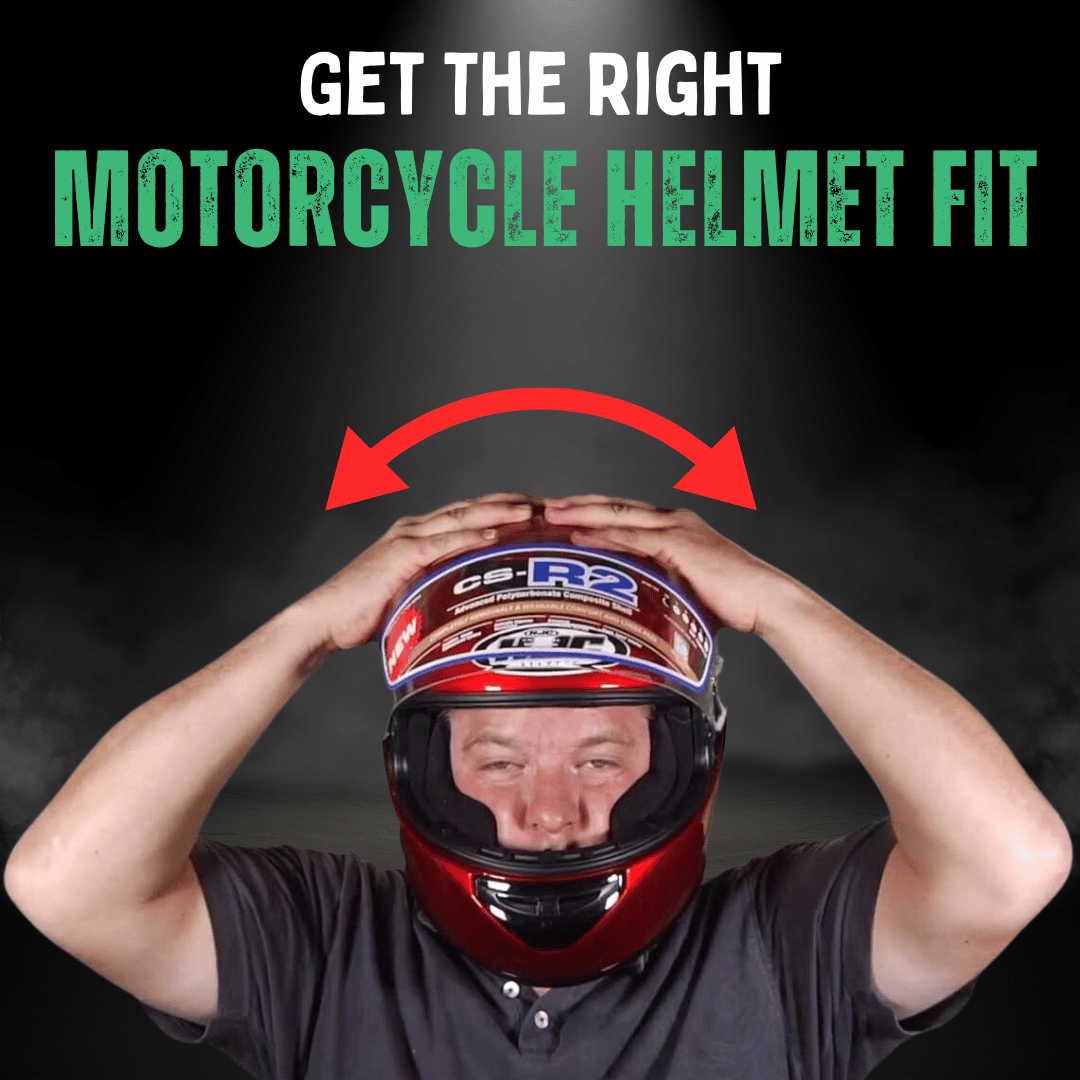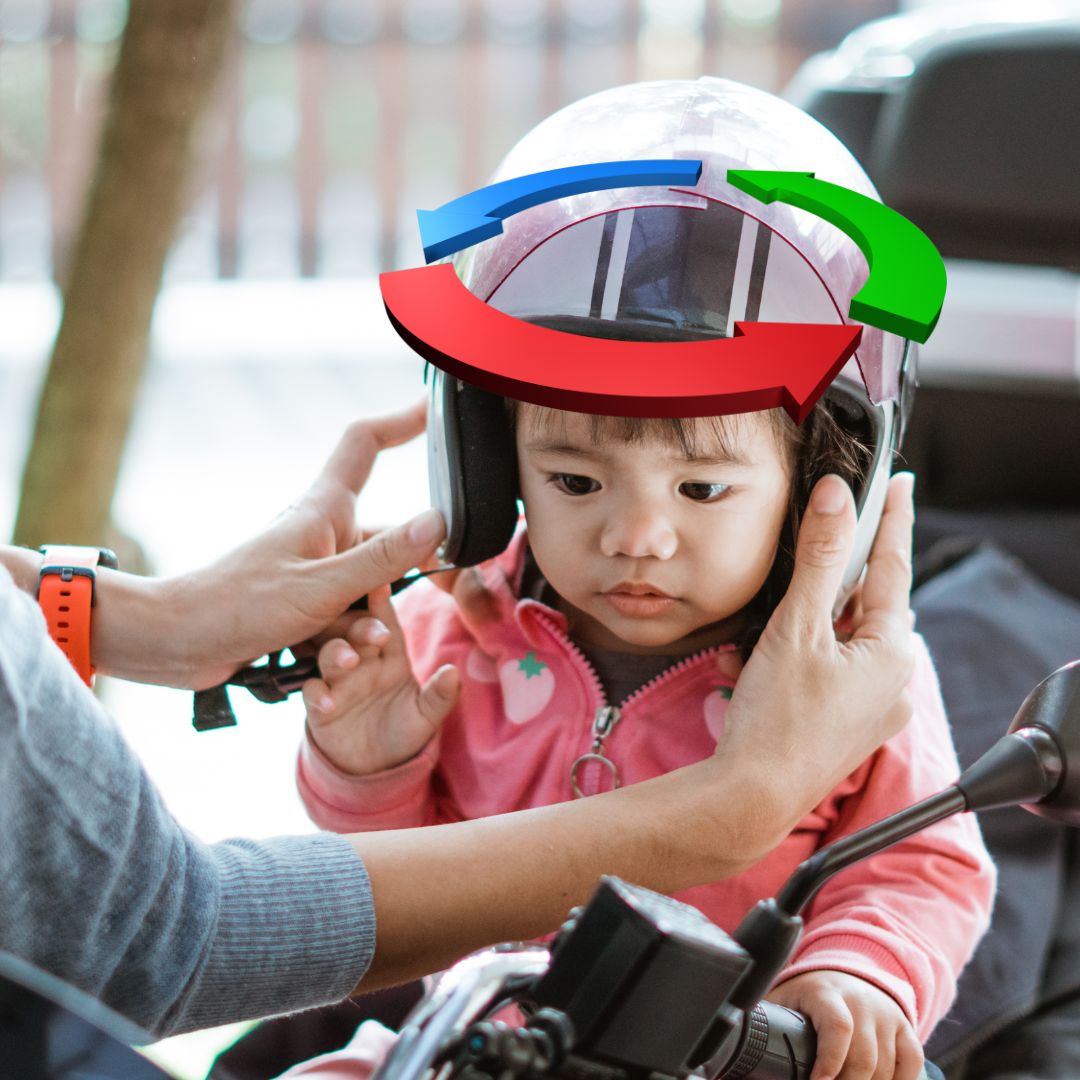
Updated: 14.05.25
A well-fitting motorcycle helmet is vital for safety and comfort on the road. An ill-fitting helmet can distract or fail to protect. This guide helps you measure your head, choose the right style, and ensure a snug fit. Explore our kids’ ride-on motorbikes for safe adventures!
1. How to Ensure a Proper Helmet Fit
Measure the largest part of your head (above ears and eyebrows) for a snug, comfortable fit. Helmets mold to your head over time, balancing safety and comfort.
2. Measuring Head Shape and Size
Head shapes vary (round oval, intermediate oval, long oval), impacting helmet fit.
- Use a Measuring Tape: Fabric tape is ideal.
- Measure Correctly: Place tape 0.5 inches above eyebrows, covering the fullest part.
- Check Twice: Repeat for accuracy and consult manufacturer sizing charts.
Related: Why Do Dirt Bike Helmets Have Visors?
3. Choosing the Right Helmet Style
Match your helmet to your riding style for safety and comfort.
| Helmet Type | Features | Best For |
|---|---|---|
| Full-Face | Full coverage, visor, aerodynamic | High-speed, touring |
| Open-Face | Light, less coverage, good visibility | City commuting, leisurely rides |
| Modular | Flip-up front, versatile | Touring, commuting |
| Half | Minimal coverage, lightweight | Short, low-speed rides |
| Dirt Bike | Extended visor, ventilated | Off-road, motocross |
Ensure helmets meet DOT or Snell safety standards. Budget-friendly options can still be safe.
4. Trying On the Helmet
Try on helmets to ensure a snug, even grip without discomfort. No finger should fit between the helmet and forehead.
Comfort Liners: Swap cheek pads or liners for a custom fit.
5. Fit and Comfort Tests
- Shake Test: Shake head side-to-side and up-down; the helmet should stay secure.
- Pull Test: Pull from the back; it shouldn’t slide down.
- Visual Check: Ensure it sits square, covering the forehead without tilting.
- 30-Minute Test: Wear for 30 minutes to identify pressure points or discomfort.
6. Additional Fit Considerations
- Glasses: Try helmets with glasses to ensure comfort without temple pressure.
- Accessories: Account for Bluetooth headsets or GoPro mounts.
- Fit Over Time: Snug helmets loosen slightly, ensuring long-term comfort.
7. Helmet Care and Maintenance
- Cleaning: Use mild soap for the shell, fabric cleaner for liners. See how to clean a dirt bike helmet.
- Inspection: Check for cracks, loose padding, or frayed straps before rides.
- Storage: Keep in a cool, dry place away from sunlight.
8. Customizing Helmet Fit
- Cheek Pads: Replace for better face snugness.
- Liners: Swap for moisture-wicking or thicker options.
- Straps: Adjust chin straps for a secure, comfortable fit; add covers if needed.
9. When to Replace Your Helmet
Replace helmets every 5–7 years or immediately after a crash, as materials degrade and impact compromises safety.
10. Warning Signs of Poor Fit
- Pressure Points: Forehead or temple pressure indicates a tight fit.
- Looseness: Gaps or movement during shaking suggest it’s too loose.
- Strap Issues: Tight, loose, or irritating straps need adjustment or covers.
11. Helmet Sizing Chart
| Head Circumference (cm) | Size | Common Types |
|---|---|---|
| 52–54 | XS | Full-Face, Open-Face |
| 55–56 | S | Full-Face, Modular |
| 57–58 | M | Full-Face, Open-Face |
| 59–60 | L | Full-Face, Modular |
| 61–62 | XL | Full-Face, Dirt Bike |
| 63–64 | XXL | Full-Face, Open-Face |
Conclusion
A properly fitting motorcycle helmet enhances safety and comfort, molding to your head over time. Measure accurately, test thoroughly, and maintain regularly to ensure protection on every ride. Safe travels!
Frequently Asked Questions
How do I know if my helmet is too tight or loose?
Pressure points or headaches indicate it’s too tight; gaps or movement during shaking mean it’s too loose.
How often should I check my helmet’s fit?
Check annually, as padding compresses over time, altering fit.
Can I customize helmet padding for a better fit?
Yes, replace cheek pads or liners with thicker/thinner options for a tailored fit.
Do temperature and humidity affect helmet fit?
Yes, extreme conditions can expand or contract materials, subtly changing fit. Store in a controlled environment.
Can I wear glasses with a motorcycle helmet?
Yes, try the helmet with glasses to ensure comfort without temple pressure.
Get in Touch 🚀
Loved our guide on “How to Get the Right Motorcycle Helmet Fit”? Want more biking safety tips?
We’re here for all your kids’ ride-on toy questions! 🚗💨
Explore more at RiiRoo.com.
Or, chat with us via Live Chat for instant answers!







Share:
Motorcycle Safety Tips - Visor vs Goggles
How Tall Do You Have to Be to Ride a Motorcycle?